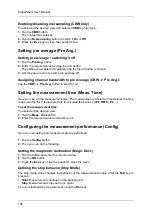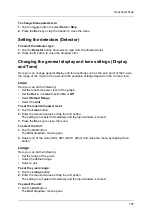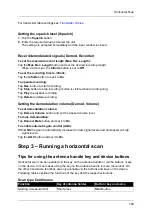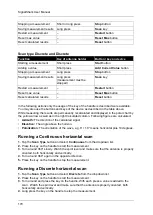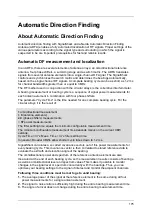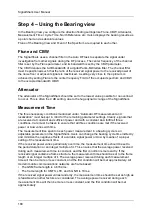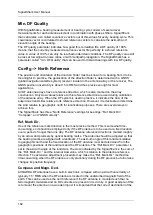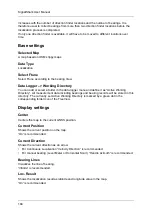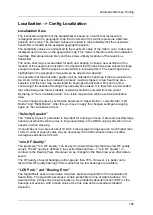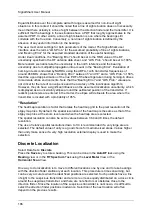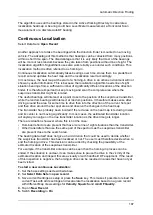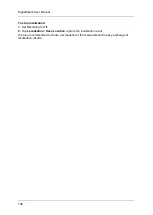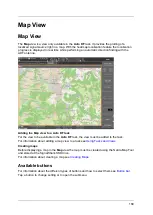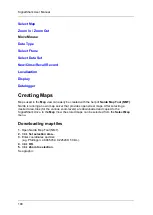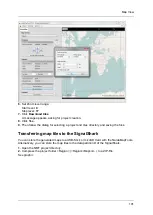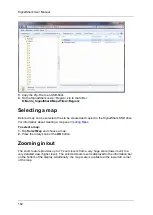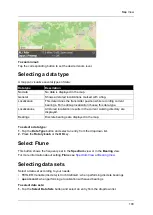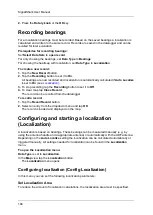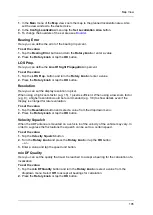
SignalShark User Manual
180
Step 4 – Using the Bearing view
In the Bearing View you configure the direction finding settings like Ftune, CBW, Attenuator,
Measurement Time / Cycle Time, North Reference etc. It also displays the bearing results as
a polar chart and as absolute values.
Ftune of the Bearing View and Fcent of the Spectrum are coupled to each other.
Ftune and CBW
The SignalShark uses a channel filter in the Auto DF task to separate the signal under
investigation from other signals during the DF process. The center frequency of the channel
filter is set by the Ftune parameter, and its bandwidth is set by the CBW parameter.
The CBW denotes the 6-dB bandwidth of a digital Parks-McClellan filter. The channel filter
must be positioned such that the ratio of the received signal power to the received power of
the noise floor or adjacent signals is maximized. A setting very close to the optimum is
achieved by setting Ftune to the center frequency Fmid of the occupied spectrum and CBW
to the occupied bandwidth OBW.
Attenuator
The attenuator of the SignalShark should be set to the lowest value possible for no overload
to occur. This is often the 0 dB setting, due to the huge dynamic range of the SignalShark.
Measurement Time
The three necessary conditions mentioned under “Automatic DF measurement and
localization” must be kept in mind for the remaining parameter settings. Clearly, signals that
are received at constant and sufficient power and with a constant AoA fulfill all three
conditions. Care must be taken to ensure that all three conditions are met if the received
power or AoA varies with time.
The measurement time spent on each power measurement in a bearing cycle is an
adjustable parameter on the SignalShark. Users can change the bearing cycle time indirectly
and minimize the negative effects of a variable signal power or AoA by means of a proper
setting of the measurement time.
If the received power varies periodically over time, the measurement time should be set to
the period duration or an integer multiple of it. This ensures that the average power received
during each measurement time is constant, and the first condition is met exactly. If the
received signal contains a frame structure, the measurement time should be set to the frame
length or an integer multiple of it. The average power received during each measurement
time will then be more or less constant, and the first condition will be met approximately. All
modern mobile communications networks are frame based.
•
The GSM frame length is 4.6154 ms.
•
The frame length for UMTS, LTE, and 5G NR is 10 ms.
If the received signal power varies randomly, the measurement time should be set as high as
is feasible when other factors are considered. The average power received during each
measurement time will then be more or less constant, and the first condition will be met
approximately.
Summary of Contents for Narda SignalShark
Page 1: ...User Manual Version 2019 07 ...
Page 2: ......
Page 14: ......
Page 15: ...15 Online Help Version 2019 07 ...
Page 16: ......
Page 31: ...Introduction 31 Figure Loop antenna frequency range 9 kHz to 30 MHz ...
Page 32: ......
Page 38: ......
Page 44: ......
Page 60: ......
Page 66: ......
Page 74: ......
Page 88: ......
Page 104: ......
Page 118: ......
Page 132: ......
Page 158: ......
Page 198: ......
Page 204: ......
Page 214: ......
Page 226: ......

